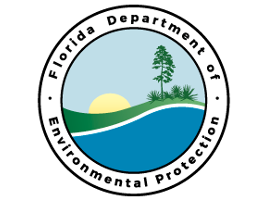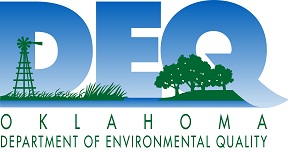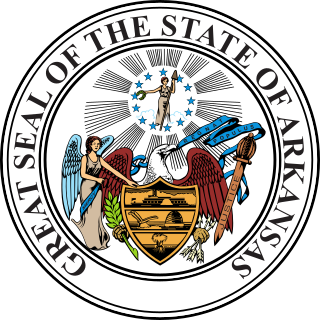Industrial waste is the waste produced by industrial activity which includes any material that is rendered useless during a manufacturing process such as that of factories, industries, mills, and mining operations. Types of industrial waste include dirt and gravel, masonry and concrete, scrap metal, oil, solvents, chemicals, scrap lumber, even vegetable matter from restaurants. Industrial waste may be solid, liquid or gaseous. It may be hazardous or non-hazardous waste. Hazardous waste may be toxic, ignitable, corrosive, reactive, or radioactive. Industrial waste may pollute the air, the soil, or nearby water sources, eventually ending up in the sea. Industrial waste is often mixed into municipal waste, making accurate assessments difficult. An estimate for the US goes as high as 7.6 billion tons of industrial waste produced every year. Most countries have enacted legislation to deal with the problem of industrial waste, but strictness and compliance regimes vary. Enforcement is always an issue.
The South Carolina Department of Health and Environmental Control is the government agency responsible for public health and the environment in the U.S. state of South Carolina. It was created in 1973 from the merger of the South Carolina State Board of Health and the South Carolina Pollution Control Authority.

Environmental Protection Department (EPD) is a department of Hong Kong Government concerning the issues of environmental protection in Hong Kong.
The Tennessee Department of Environment and Conservation (TDEC) is a Cabinet-level agency within the government of the U.S. state of Tennessee, headed by the Tennessee Commissioner of Environment and Conservation.
The Florida Department of Environmental Regulation (DER) was the agency which, from the mid-1970s to the mid-1990s, handled regulation, management, conservation, compliance and enforcement of a wide range of environmental and natural resource activities in the state of Florida, United States. Prior to that time, these activities were functions of the Florida Department of Health and of the Florida Department of Pollution Control. DER has now been merged with the Florida Department of Natural Resources to form the Florida Department of Environmental Protection.

The Texas Commission on Environmental Quality (TCEQ) is the environmental agency for the state of Texas. The commission's headquarters are located at 12100 Park 35 Circle in Austin. The fourth largest environmental agency in the United States, it employs approximately 2,780 employees, has 16 regional offices, and has a $474 million operating budget for the 2016 fiscal year.

The New Jersey Department of Environmental Protection (NJDEP) is a government agency in the U.S. state of New Jersey that is responsible for managing the state's natural resources and addressing issues related to pollution. NJDEP now has a staff of approximately 2,850.
The Washington State Department of Ecology, or simply, Ecology, is an environmental regulatory agency for the State of Washington. The department administers laws and regulations pertaining to the areas of water quality, water rights and water resources, shoreline management, toxics clean-up, nuclear waste, hazardous waste, and air quality. It also conducts monitoring and scientific assessments.

The Illinois Environmental Protection Agency of the state of Illinois is the primary body concerned with the protection of the environment for the state. The Illinois EPA's mission is "to safeguard environmental quality, consistent with the social and economic needs of the State, so as to protect health, welfare, property and the quality of life."
The Pennsylvania Department of Environmental Protection (DEP) is the agency in the U.S. state of Pennsylvania responsible for protecting and preserving the land, air, water, and public health through enforcement of the state's environmental laws. It was created by Act 18 of 1995, which split the Department of Environmental Resources into the Department of Environmental Protection and the Department of Conservation and Natural Resources. Its current secretary is Patrick McDonnell.
The Iowa Department of Natural Resources is a department/agency of the U.S. state of Iowa formed in 1986, charged with maintaining state parks and forests, protecting the environment of Iowa, and managing energy, fish, wildlife, land resources, and water resources of Iowa.

The Florida Department of Environmental Protection (FDEP) is the Florida government agency charged with environmental protection. It is under the nominal control of the governor.

The Oklahoma Department of Environmental Quality (DEQ) is a department of the government of Oklahoma under the Governor of Oklahoma. It is responsible for protecting human health and for safeguarding the natural environment: air, water, and land. DEQ is chiefly responsible for the environmental policy of Oklahoma. It is governed by a thirteen member Environmental Quality Board appointed by the Governor, which in turn appoints an Executive Director to administer the Department.
The Idaho Department of Environmental Quality is the department of the Idaho state government responsible for administration of state and federal environmental laws and regulations. It is organized into five divisions:

The Alabama Department of Environmental Management (ADEM) is a state government agency charged with the enforcement of environmental policy in the U.S. state of Alabama. It is authorized to adopt and enforce rules and regulations consistent with the statutory authority granted to the Alabama Environmental Management Commission and ADEM by the United States Environmental Protection Agency (EPA). It was created in 1982 with the passage of the Alabama Environmental Management Act by the Alabama Legislature. The act consolidated the various commissions, agencies, and programs that had been responsible for implementing environmental law into the Alabama Environmental Management Commission and ADEM. In past years, the agency has been repeatedly accused of not enforcing environmental regulations.
The Ohio Environmental Protection Agency is the administrative department of the Ohio state government responsible for protecting the environment and public health by ensuring compliance with environmental laws. Those laws and related rules outline Ohio EPA's authority and what things the Agency can consider when making decisions about regulated activities.

The Central Pollution Control Board (CPCB) of India is a statutory organisation under the Ministry of Environment, Forest and Climate Change (Mo.E.F.C). It was established in 1974 under the Water Act, 1974. The CPCB is also entrusted with the powers and functions under the Air Act, 1981. It serves as a field formation and also provides technical services to the Ministry of Environment and Forests under the provisions of the Environment (Protection) Act, 1986. It Co-ordinates the activities of the State Pollution Control Boards by providing technical assistance and guidance and also resolves disputes among them. It is the apex organisation in country in the field of pollution control, as a technical wing of MoEFC. The board is led by its Chairperson, who is generally a career civil servant from the Indian Administrative Service appointed by the Appointments Committee of the Cabinet of the Government of India. The current acting chairman is S. P. Singh Parihar and the Member Secretary is Prashant Gargava.
Water in Arkansas is an important issue encompassing the conservation, protection, management, distribution and use of the water resource in the state. Arkansas contains a mixture of groundwater and surface water, with a variety of state and federal agencies responsible for the regulation of the water resource. In accordance with agency rules, state, and federal law, the state's water treatment facilities utilize engineering, chemistry, science and technology to treat raw water from the environment to potable water standards and distribute it through water mains to homes, farms, business and industrial customers. Following use, wastewater is collected in collection and conveyance systems, decentralized sewer systems or septic tanks and treated in accordance with regulations at publicly owned treatment works (POTWs) before being discharged to the environment.
The Indiana Department of Environmental Management (IDEM) is the agency of the U.S. state of Indiana charged with protecting the environment and human health. There are many offices within IDEM and each has a specific role in environmental protection. According to the department's website, their mission is "to implement federal and state regulations to protect human health and the environment while allowing the environmentally sound operations of industrial, agricultural, commercial and government activities vital to a prosperous economy"

The Arkansas Geological Survey (AGS), formerly the Arkansas Geological Commission (AGC), is a government agency of the State of Arkansas. It is responsible for the investigation of the geology, geologic processes, and geologic resources within the state. It encourages the considered management and utilization of the state's mineral, fossil-fuel, and water resources with attention to the potential environmental issues of that activity.










